Dinazorların ingilizce tanıtımları, resimleri. Dinazor türleri, dinazorların ingilizce özellikleri, hakkında ingilizce bilgi.
Dinazorlar Hakkında İngilizce Bilgi

- NAME: Ceratosaurus
- MEANS: Horn Lizard
- PERIOD: Late Triassic
- WHERE: Lesotho (a kingdom of Southern ATrica)Zimbabwe, South Africa
Quick Facts:
Ceratosaurus was a powerful predator that walked on two strong legs, had a strong, s-shaped.neck and had a short horn on its snout. It had a massive tail, abulky body, and heavy bones. Its arms were short and it had four-fingered hands (a primitive configuration) With sharp claws. lt also had large eyes (and therefore probably had very good eyesight). Ceratosaurus may have hunted in groups. Ceratosaurus was a theropod, whose intelligence was high among the dinosaurs.
NAME: TRICERATOPS
Despite appearances, Triceratops was no gentle, plant-eating giant Many fossil records show damage to Triceratops bones that could have occurred in combat with rivals or predators. Aside from inter-group displays of domination and as weapons, horns could also be used in mating displays. The neck frill would have offered some protection against predatory bites (such as that of the Tyrannnosaurus rex) and may have regulated body temperature.
İSİM: Triceratops- Üç Boynuzlu Yüz (Three Horned Face)
Triceratops, Ceratopsia grubuna ait bir dinozor cinsidir. Geç Kretase periyodunda günümüz Kuzey Amerika kıtasına karşılık gelen bölgede yaşamını sürdürmüştür. Kretase-Paleosen toplu yok oluşu öncesinde yaşayan son dinozor cinslerinden biridir. Triceratops “üç boynuzlu yüz” anlamına gelir. Üç adet boynuzu, papağan benzeri gagası ve neredeyse 1 metre genişliğe sahip yakasıyla Triceratops kafatası oldukça büyük ve çarpıcıdır. Triceratops bitkileri kesme ve dilimlemeye yatkın dişlere ve sert bitkileri hazmedebilecek büyük bir mideye sahipti. Boynuzlarınl Tyrannosaurus saldırılarından korunmak için kullanırdı. 1997’de saptanan bir Triceratops fosili Tyrannosaurus tarafından ısırılmış bir boynuza sahiptir ancak boynuz iyileşme izleri taşımaktadır. Bu da bize en azından bazı Triceratops bireylerinin bu saldırılardan sağ kurulabildiğini gösterir. Erkek Triceratops bireylerinin yaka kısımlarında saptanan ve boynuz çarpması sonucu oluşmuş izler ise erkek bireylerin dişilerini etkilemek için birbirleriyle dövüştüklerini kanıtlamaktadır.
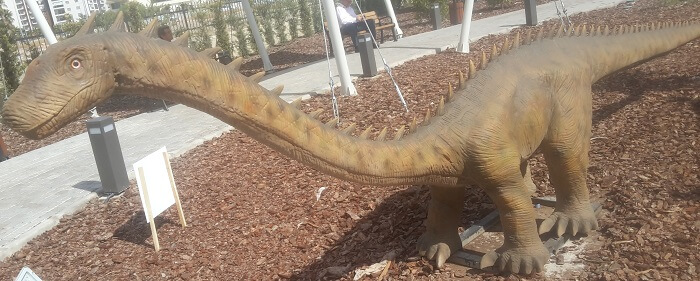
NAME: DIPLODOCUS
Diplodocus was a long-necked, whip-tailed giant, measuring about 90 feet (27 m) long with a 26 feet (8 m) long neck and a 45 feet (14 m) long tail, but its head was less than 2 feet long. It was among the longest land animals ever. Its nostrils were at the top of its head and it had peg-like teeth, but only in the front of the jaws. Its front legs were shorter than its back legs, and all had elephant-like, five-toed feet. One toe on each foot had a thumb claw, probably for protection. A fossilized Diplodocus skin impression reveals that it Hid a row of spines running down its back.
İsim: DIPLODOCUS
Diplodocus, uzunluğu boyu 26 metre (8 metre), uzunluğu 45 metre (14 metre) olan uzun boyunlu, kırbaçlı kuyruklu bir devdi; başı 2 fitten daha kısa idi, uzun. En uzun kara hayvanları arasında yer alıyordu. Burun delikleri başının üstündeydi ve çivilerin benzeri dişleri vardı, ancak yalnızca çenelerin önündeydi. Ön bacakları sırt bacaklarından daha kısaydı ve hepsinin fil benzeri, beş ayaklı ayakları vardı. Her ayağın bir ayak parmağı, muhtemelen korunması için bir başparmak pençesine sahipti. Fosilleşmiş bir Diplodocus cilt izlenimi sırtından aşağıya doğru bir dizi sırtın döndüğünü ortaya koyuyor.

- NAME: Spinosaurus
- MEANS: Spiny Lizard
- PERIOD: The Middle Cretaceous – 95 million years ago
- WHERE: Africa: Egypt and Morocco
Spinosaurus was a huge meat-eating dinosaur that had a series of spines op its back,Spinosaurus was bipedal (it walked on two legs). It was about 40-50 feet long (12-15 m) and weighed 4 tons or more. Spinosaurus’ huge sail may have been used for regulating its temperature. it was a carnivore, a meat eater with huge teeth and powerful jaws. lt ate dinosaurs and large fish. Spinosaurus walked on two muscular legs and was a relatively fast, two-legged runner, it was an advanced theropod, whose intelligence” was high among the dinosaurs.
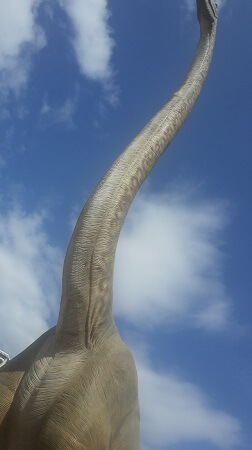 NAME: Brachiosaurus
NAME: Brachiosaurus
Brachiosaurus was one of the tallest and largest dinosaurs yet found. It had a long neck, small head, and relatively short, thick tail. Brachiosaurus was about 85 feet (26 m) long, and weighed about 33-88 tons. Brachiosaurus walked on four legs and, like the other Brachiosaurids and unlike most dinosaurs, its front legs were longer than its hind legs. Brachiosaurus was an herbivore, a plant eater, it was a sauropod, whose intelligence was the among the lowest of the dinosaurs.
NAME: VELOCIRAPTOR
With a stance between the size of a Great Dane and a large turkey, Velociraptor was smaller than its portrayal in popular culture, but it was still a fearsome hunter. In September 2007, researchers found evidence of quill knobs on the forearm of Velociraptor which implied the presence of feathers. Current research shows that this non-avian Theropod was probably warm-blooded and most likely had a downy or feathery coat to retain heat and provide energy to hunt.
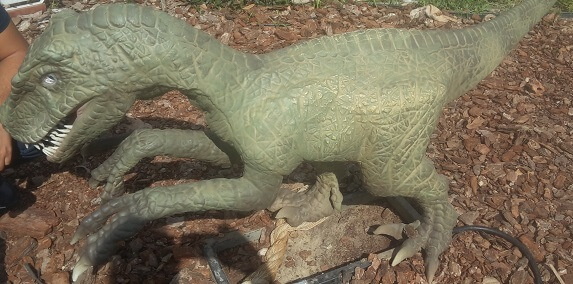
İSİM: VELOCİRAPTOR (Hızlı Hırsız)
Velociraptor, Büyük Dane’nin büyüklüğü ve büyük bir hindi boyutu arasında duruşuyla popüler koleksiyonda gösterilenden daha küçüktü, ancak hala korkunç bir avcıydı. Eylül 2007’de, araştırmacılar Velociraptor’un önkolunda, tüylerin varlığına imâ eden tüy yuvarlaklarının kanıtını buldular. Mevcut araştırmalar, bu kuş olmayan Theropod’un muhtemelen sıcakkanlı olduğunu ve büyük olasılıkla ısıyı korumak ve avlanmak için enerji sağlamak için küçümseyici veya tüylü bir tabaka bulunduğunu gösteriyor.
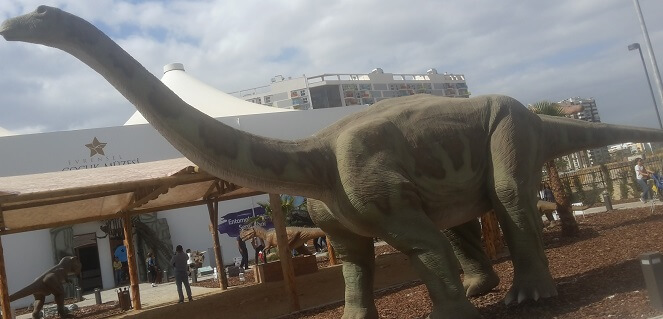
Name: APATOSAURUS
Lumbering, through the flat lands, Apatosaurus consumed vast amount of vegetation (200 Kilograms ot 440 lbs) daily to satisfy the needs of its immense body.Size was one of the best forms of protection that guarded Apatosaurus from predators.That and the 50 foot tail which may have cracked like a whip creating a warning sound alerting others in the group of danger.
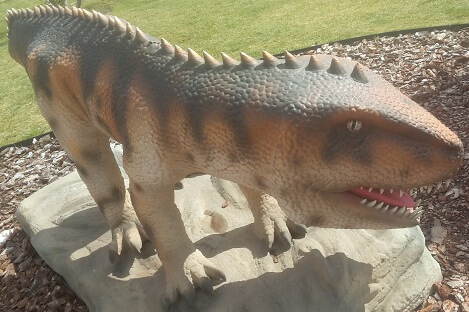
NAME: Fabrosaurus
Fabrosaurus was a small, early, plant-eating dinosaur that lived in Africa during the late Triassic period and early Jurassic period, roughly 208 to
1196 million years ago. Very little is known about Fabrosaurus since only a portion of a jaw has been found. Fabrosaurus is a dubious genus; it may be the same dinosaur as Lesothosaurus. Fabrosaurus was named in 1964 by paleontologist Leonard Ginsburg to honor the French scientist Jean Henri Fabre (a colleague of Ginsburg’s who was on the dig that discovered Fabrosaurus). The type species is F. australis. Fossils of this primitive dinosaur have been found in Lesotho, South Africa.

NAME: Kentrosaurus
Kentrosautus measured up to 17 feet long (5 m) and weighed about 2 tons, but its small brain was the size of a walnut. Its skull was long and narrow, with a toothless beak and small cheek teeth. Its head was carried close to the ground. It had hoof-like claws on its toes.
Kentrosaurus had two rows of bony plates that were embedded in its back, that went from its neck to its mid-section. A double row of spikes Tan from its mid-section to its tail, and a pair spikes protected its shoulders. Since these were not attached to its bones, no one is sure exactly how they were positioned. Also, the function of the plates is uncertain; perhaps they were for temperature regulation, since they contained networks of blood vessels, or maybe they were for protection or mating display purposes. The spikes were used as protection from predators.
Kentrosaurus had a very small, but long, brain. The olfactory bulbs were we11 developed; this is the part of the brain that gave the animal a very good sense of smell.
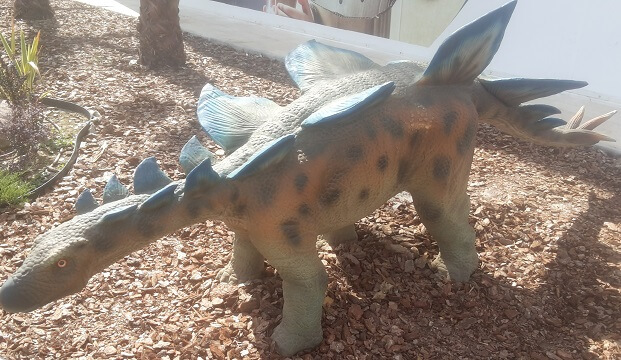
NAME: STEGOSAURUS
Whether battling its own kind or predators, Stegosaurus could swing its two pairs of tail spikes (each up to 4 feet long) as awesome defensive weapons. The 17 bony dorsal plates arranged alternately along its spine may have served as armor, a mating display, heat regulation, or all three. These plates may have allowed Stegosaurus to appear larger, thereby discouraging enemy attack.
İsim: Stegosaurus- Çatılı Kertenkele (Roof Lizard)
Stegosaurus, üzerinde bir sıra halinde dizili zırh benzeri kemik levhalar bulunan Stegosauria grubuna ait otçul bir dinozor cinsidir. Geç Jura periyodunda günümüz Kuzey Amerika kıtasına karşılık gelen bölgede yaşamını sürdürmüştür. 2006 yılında Portekiz’de saptanan bir fosil örneği ise Stegosaurus’un Avrupa’da da varlığını göstermiştir. Stegosaurus, Allosaurus ve Ceratosaurus gibi yaşadığı dönemin avcı türlerinden kendini uç kısmında iri çivi benzeri yapılar bulunduran güçlü kuyruğu ile korumaktaydı.
Sırt kısmında dizili olan kemik levhalar iskeleti ile bütünleşik değildi, bu yüzden birçok fosil örnekte bu levhalar iskeletten ayrılmış bir durumda saptanmıştır. Stegosaurus’un ön ayakları arka ayaklarından belirgin bir şekilde kısaydı ve bu da onların sıra dışı bir görünüme sahip olmasına neden oluyordu. Kuyrukları yerden oldukça yüksek bir konumda bulunmaktaydı, buna karşın kafaları yerden en fazla bir metre yükseklikte konumlanmıştı. Vücut boyutları oldukça büyük olmasına rağmen Stegosaurus kafatasındaki beyin boşluğu neredeyse bir köpeğinki kadar küçüktü.
NOT: Yazının hazırlanmasında kullanılan resimler İzmir Karşıyaka Çocuk Müzesi’nde çekilmiştir.
